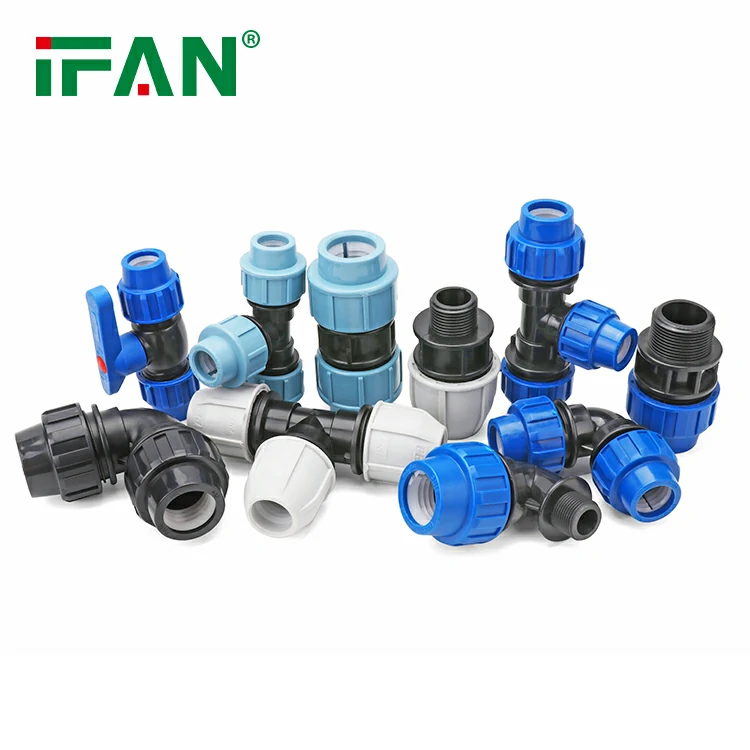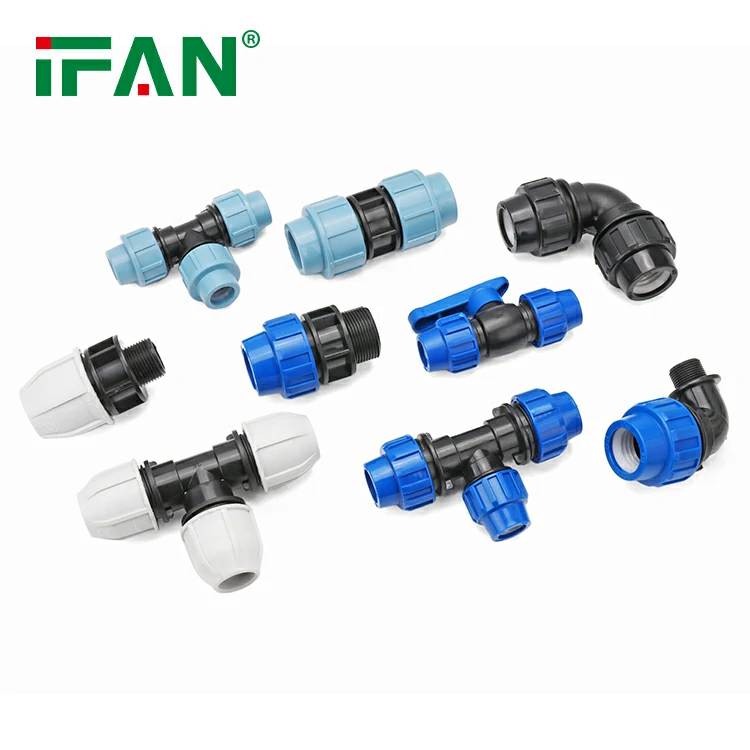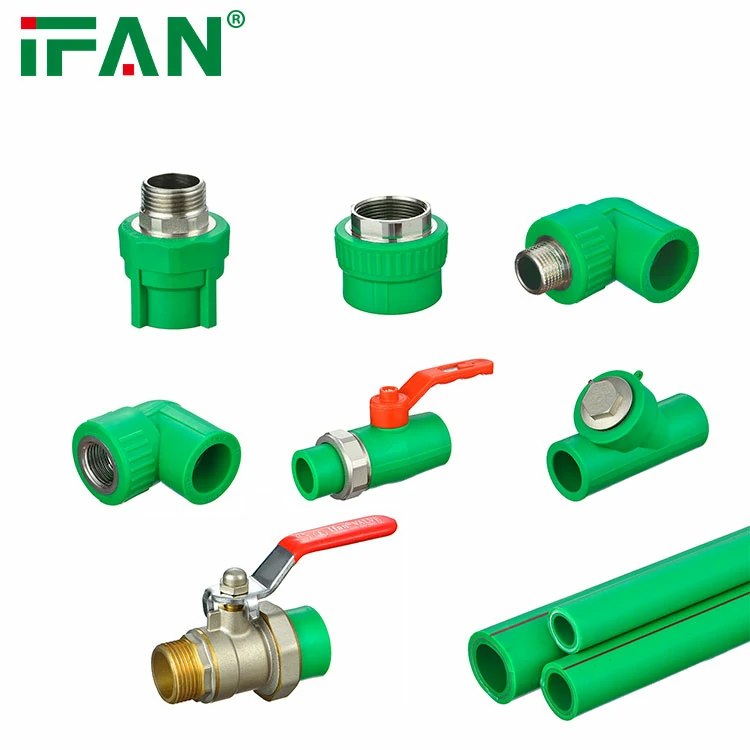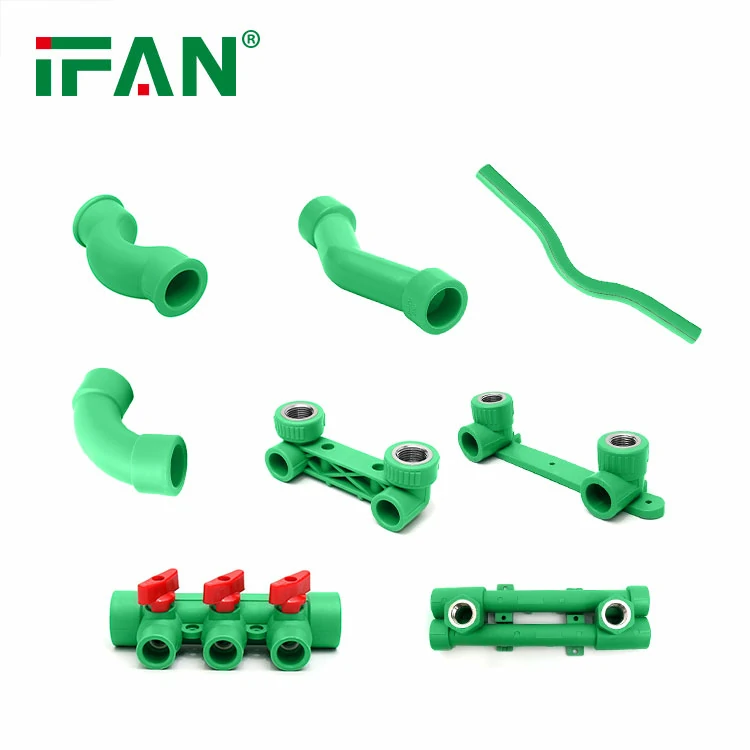IFAN factory 30+ years manufacture experience support color /size customization support free sample.Welcome to consult for catalog and free samples.This is our Facebook Website:www.facebook.com,Click to watch IFAN’s product video.Compared with Tomex products, our IFAN products from quality to price are your best choice, welcome to buy!
High-Density Polyethylene (HDPE) fittings are rapidly becoming the go-to solution for modern piping needs, offering an advanced alternative to traditional materials like metal and PVC. These innovative fittings provide a wide range of benefits, making them the future of durable piping solutions. In this article, we will explore the reasons why HDPE fittings are gaining popularity and why they are likely to dominate the industry for years to come.
What Are HDPE Fittings?
HDPE fittings are plumbing components made from high-quality plastic material, specifically high-density polyethylene. These fittings are designed to connect, regulate, or divert the flow of liquids, gases, and other substances within a piping system. They come in various forms, including elbows, tees, couplings, reducers, and flanges, making them highly versatile for different applications.
The installation of HDPE fittings is generally done using a heat fusion process, where the ends of pipes and fittings are heated and fused together to form a secure, leak-proof joint. This method ensures that HDPE fittings provide excellent structural integrity for both residential and industrial systems.
Key Benefits of HDPE Fittings
1. Unmatched Durability and Longevity
One of the primary reasons why HDPE fittings are the future of durable piping solutions is their exceptional durability. HDPE material is resistant to wear, impact, and corrosion, which means it can withstand extreme conditions without deteriorating. This resistance to corrosion is particularly important in water and sewage systems, where metal pipes often rust and degrade over time.
HDPE fittings are also highly resistant to environmental factors like UV radiation, temperature fluctuations, and moisture, which can cause other materials to fail. As a result, HDPE systems can last for several decades with minimal maintenance, making them a long-term investment for any plumbing system.
2. Chemical Resistance
Another significant advantage of HDPE fittings is their resistance to a wide range of chemicals. Whether in industrial, agricultural, or municipal settings, HDPE fittings are capable of withstanding exposure to acids, alkalis, solvents, and other corrosive substances. This makes them an ideal choice for environments where chemical exposure is frequent, such as chemical processing plants, wastewater treatment facilities, and irrigation systems.
3. Leak-Free Connections
The unique heat fusion method used to install HDPE fittings creates joints that are as strong as the pipe itself. This process ensures that the fittings form leak-free connections, minimizing the risk of water or gas leaks. Leaks can be costly to repair, especially in large-scale industrial or commercial installations, so having a reliable, leak-free system is critical for reducing maintenance and repair costs over time.
4. Flexibility and Strength
HDPE fittings are known for their flexibility, allowing them to be installed in complex piping systems without the need for additional fittings or joints. This flexibility makes them ideal for areas with high seismic activity or ground movement, as the pipes and fittings can absorb the stress caused by shifting ground without breaking or leaking.
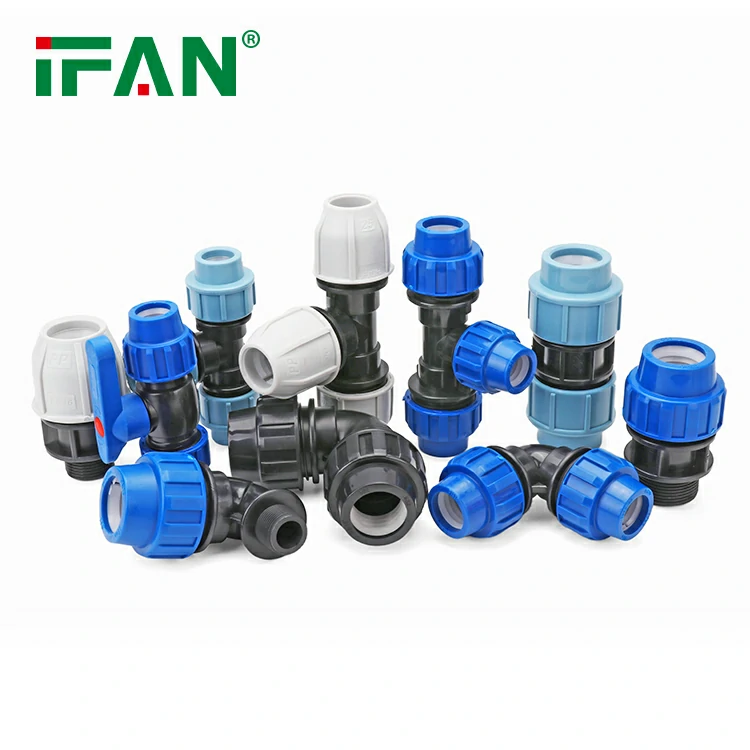
Moreover, HDPE fittings have excellent tensile strength, meaning they can handle high pressure and heavy-duty applications. This makes them suitable for both residential plumbing and large-scale industrial projects.
5. Cost-Effective Solutions
Despite the initial higher cost compared to traditional metal fittings, HDPE fittings are cost-effective in the long run. Their durability and resistance to corrosion reduce the need for frequent repairs and replacements, which can add up over time with other materials. Additionally, the lightweight nature of HDPE fittings reduces transportation and installation costs, further increasing their cost-effectiveness.
HDPE fittings are also energy-efficient, as their smooth interior surface reduces friction, ensuring better flow and minimizing energy loss in the system. This efficiency translates to lower operational costs for plumbing systems, whether for residential or industrial applications.
6. Sustainability
Sustainability is an increasingly important factor in construction and infrastructure projects. HDPE fittings are made from recyclable materials, making them an eco-friendly choice for sustainable piping systems. As environmental regulations tighten, using recyclable materials like HDPE helps to reduce the overall carbon footprint of construction projects and minimizes the waste generated during installation.
Additionally, the long lifespan of HDPE fittings means that fewer replacements are necessary, further contributing to sustainability by reducing waste and the need for new materials.
7. Ease of Installation
Installing HDPE fittings is a straightforward process, particularly when compared to traditional metal piping systems. The heat fusion technique used to install HDPE fittings is fast and efficient, and the fittings themselves are lightweight, making them easier to handle and transport. This ease of installation translates to reduced labor costs and faster project completion times, which is beneficial for both residential and commercial projects.
8. Wide Range of Applications
HDPE fittings are incredibly versatile and can be used in various applications, including water distribution, gas systems, sewage and drainage systems, and industrial pipelines. Their versatility and resistance to corrosion, chemicals, and environmental stressors make them ideal for a wide range of industries, from construction to agriculture and beyond.
Why HDPE Fittings Are the Future of Piping Solutions
HDPE fittings offer numerous benefits, but the most significant factor driving their popularity is their future-proof nature. As industries continue to focus on sustainability, efficiency, and long-term durability, HDPE fittings are positioned to become the go-to material for piping systems worldwide. With their resistance to corrosion, flexibility, strength, and ease of installation, HDPE fittings are set to play a key role in shaping the future of plumbing and piping solutions.
Additionally, as environmental concerns continue to grow, the demand for eco-friendly solutions will push more companies toward using HDPE fittings, which are both recyclable and long-lasting. With the increasing emphasis on reducing waste and minimizing the environmental impact of construction, HDPE will remain a top choice for sustainable plumbing systems.
FAQ
1. What is the lifespan of HDPE fittings?
HDPE fittings can last up to 50-100 years with proper installation and maintenance, making them a highly durable choice for plumbing systems.
2. Can HDPE fittings be used for gas systems?
Yes, HDPE fittings are widely used for gas distribution systems due to their chemical resistance, durability, and leak-free connections.
3. Are HDPE fittings resistant to UV radiation?
Yes, HDPE fittings are naturally resistant to UV radiation, making them suitable for outdoor applications where sunlight exposure is frequent.
4. How are HDPE fittings installed?
HDPE fittings are installed using a heat fusion process, where the pipe and fitting ends are heated and then fused together to create a secure, leak-proof connection.
5. Can HDPE fittings be recycled?
Yes, HDPE fittings are made from recyclable material, which makes them an eco-friendly choice for sustainable plumbing systems.
In conclusion, HDPE fittings are the future of durable, efficient, and sustainable piping solutions. Their durability, resistance to corrosion, ease of installation, and cost-effectiveness make them the ideal choice for modern plumbing systems across residential, industrial, and commercial applications. With growing concerns over environmental sustainability and the need for long-lasting solutions, HDPE fittings are set to dominate the piping industry for years to come.

